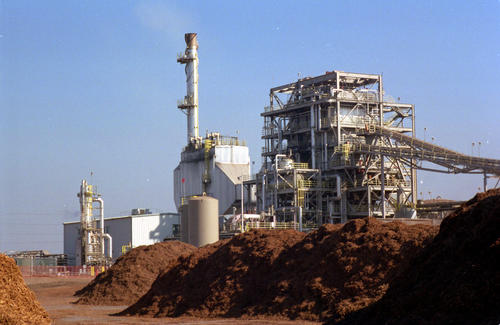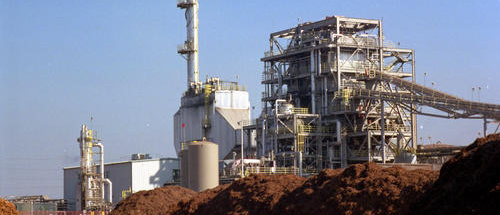
On April 11, a small company called Graphyte began pumping out beige bricks, roughly the consistency of particleboard, from their new factory in Pine Bluff, Arkansas. The bricks may not look like much, but they serve a lofty purpose: helping to stop climate change.
Graphyte, a startup backed by billionaire Bill Gates' Breakthrough Energy Ventures, will bury its rocks deep underground and trap carbon in what the company calls the world's largest carbon-removal project.
Scientists have long warned of the dire threat posed by global warming. But it has gotten so bad that the long-awaited reductions—cutting carbon dioxide emissions across all sectors of the economy—may not be enough. To stave off the worst, including large swaths of the globe facing extreme heat waves, water scarcity and crop failure, some experts say there is also a pressing need to remove previously emitted carbon. And that can be done anywhere on Earth, even in places not known for their climate-friendly policies, like Arkansas.
Graphyte wants to capture the carbon that would otherwise be released from plant matter as it burns or decomposes for a competitive price of less than $100 per metric ton, and it wants to open new operations as quickly as possible, removing tens of thousands of tons of carbon each year on its own, said Barclay Rogers, the company's founder and CEO. Still, that's nowhere near the amount of carbon that needs to be removed to register as a blip in global carbon emissions. “I'm concerned about the scale at which we're deploying it,” he said. “I think we need to get serious quickly.”
Hundreds of carbon-removal startups have sprung up like mushrooms in recent years, but the fledgling industry has made little headway so far. Which raises the inevitable question: Can Graphyte and companies like it actually play a meaningful role in the fight against climate change? And will a popular business model among these companies, which involves inviting other companies to voluntarily buy “carbon credits” for those buried rocks, actually work?
Whether carbon emissions are cut now or removed from the atmosphere after they’ve been released, climate scientists stress that there’s no time to lose. The clock started ticking years ago, with the advent of unprecedented fires and floods, superstorms and intense droughts around the world. But carbon removal, as currently proposed, also raises additional sociological, economic and ethical questions. For example, skeptics say it could discourage more urgent efforts to cut carbon emissions, leading some experts to question whether it will work at all.
Still, the Intergovernmental Panel on Climate Change, the world’s leading group of climate experts, expects carbon-removal technology to grow dramatically. For the industry to make a difference, experimentation and research and development will need to happen quickly, within the next few years, said Gregory Nemet, a professor of public affairs who studies low-carbon innovation at the University of Wisconsin-Madison. “Then it’s time to really go big and scale it up so it becomes climate-relevant,” he added. “Scale up is a big challenge.”

